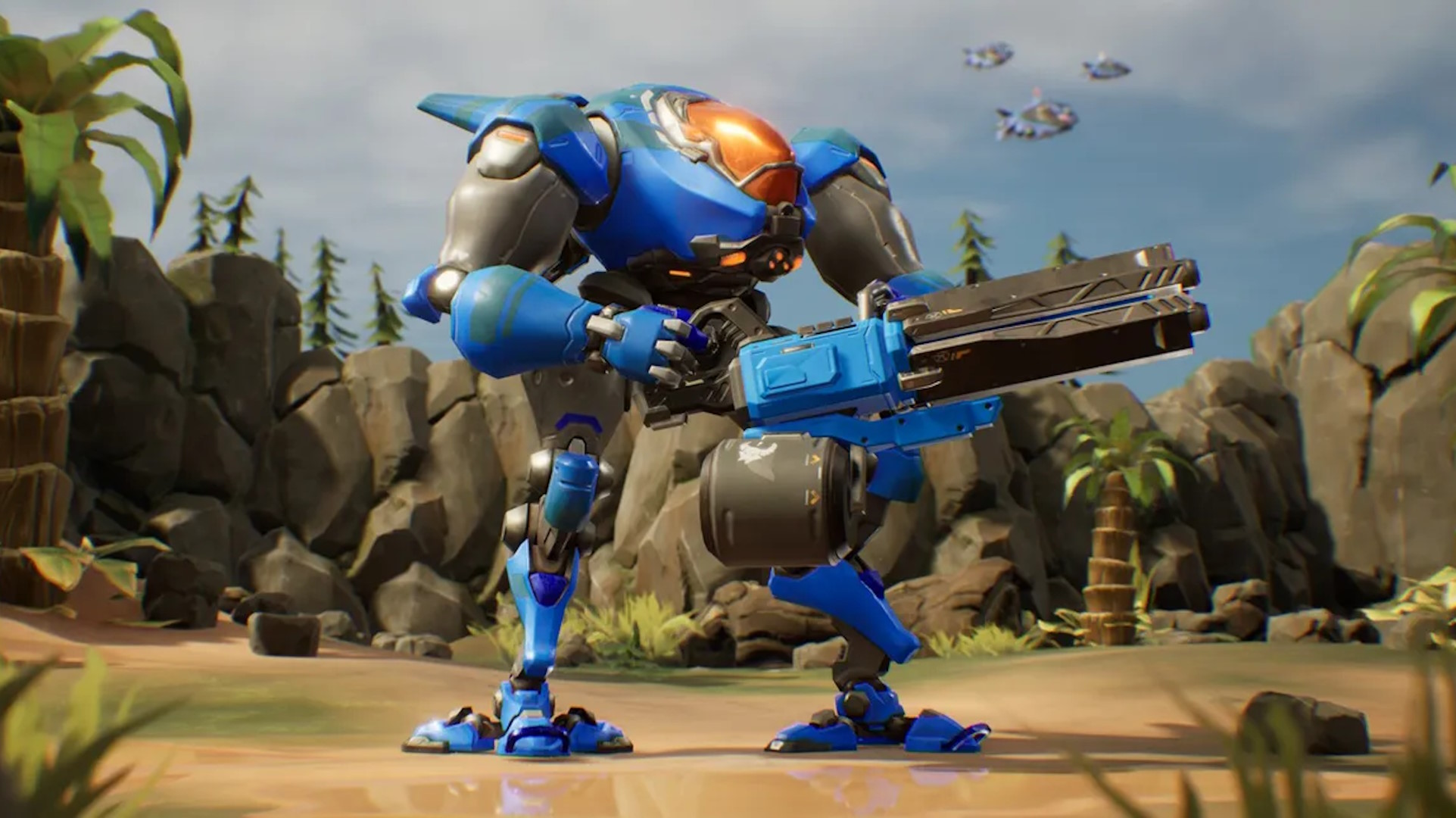
Attention, real-time strategy lovers: If you've always wanted StarCraft 3, or Warcraft 4, or maybe both combined with a little Command & Conquer thrown in, you should be paying close attention to Stormgate.
Stormgate is scheduled to enter early access on Steam this summer. The free-to-play RTS turtles in the camps of those previous games, which should be no surprise, given that the leadership at developer Frost Giant includes people who helped create all those titles. (Read an earlier interview with them here.)
The campaign is set on a post-post apocalyptic Earth, with the Terran-like Vanguard defending the planet against an invasion of Zerg-like Infernal Host mobs. Frost Giant has yet to announce the third faction.
I recently got a chance to play the closed beta of Stormgate in both three-player co-op mode and single player (PVP without heroes and PVE versus AI), plus preview the new material launching this week in preparation for Steam Next Fest. What I found was an RTS that didn't stray far from its big-name strategy roots: Stormgate distinctly resembles its StarCraft and Warcraft predecessors, and that's not a bad thing.
Timely note: If you want to play the beta of Stormgate, Wednesday is the final day of the $2 million Kickstarter, the $40 tier of which grants access to the beta.
Stormgate's core gameplay: StarCraft and Warcraft get an update
The Stormgate basics will feel familiar to anyone who previously played StarCraft 2 or Warcraft 3. I enlisted a couple of friends with history in both of those games to help with my beta test, one who played almost exclusively singleplayer and campaign, the other who had more in-depth experience.
Campaign chapters are not yet available to play. The free-to-play game's long-term funding will be based on the sale of new campaign chapters, heroes and the like. The map editor, which is essentially the tool that Frost Giant is using to build Stormgate, will be available to players after full launch but was also not yet available for testing.
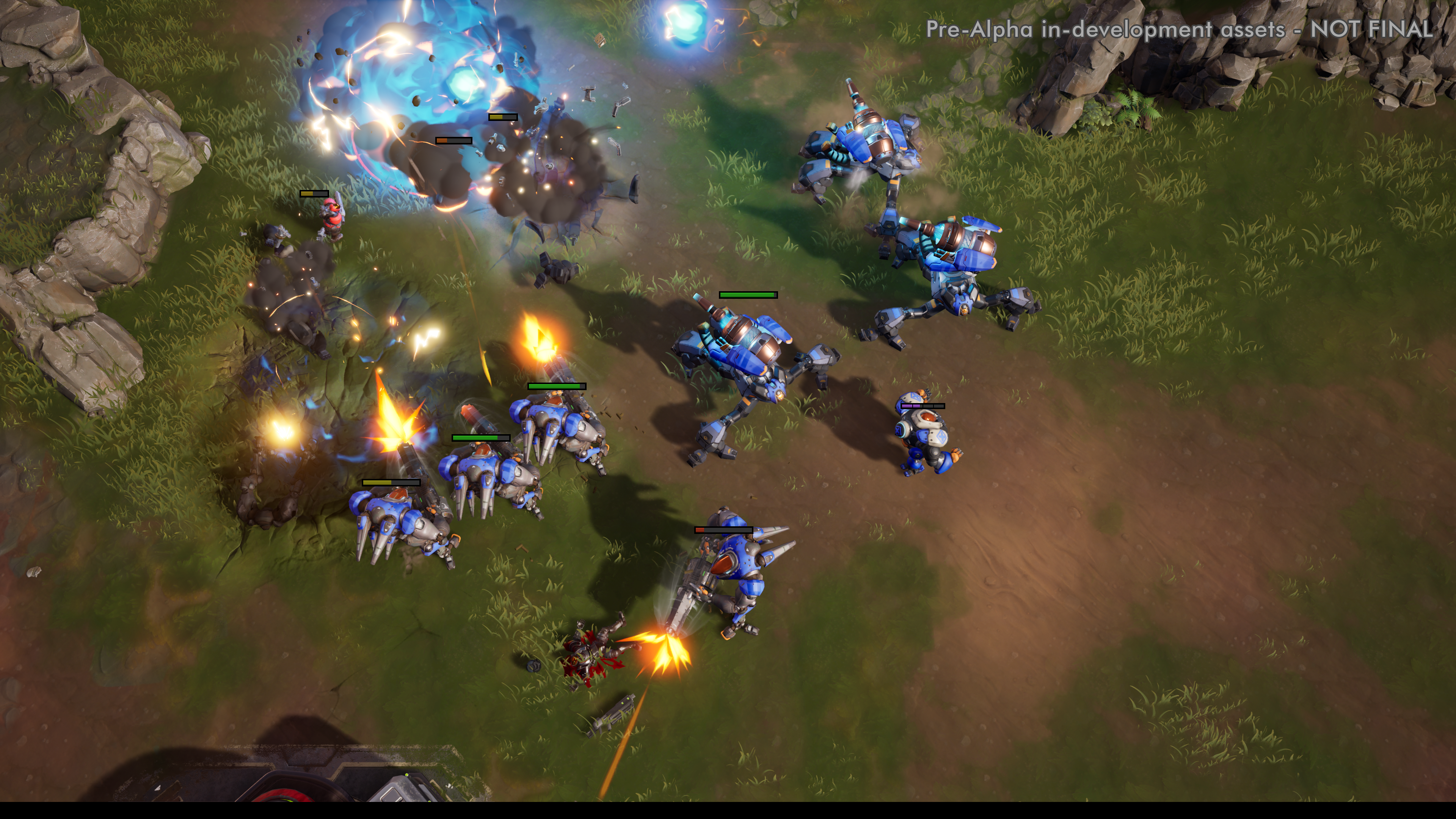
The look and feel of the UI (at least in the last beta build) is very much like StarCraft 2. You build buildings, rally new units directly to where you want them to go (resources, defensive positions or an offensive group), build a death blob and go in hunt of your enemies. Or at least that's what we did, successfully. The final meta might actually be closer to the smaller groups of Warcraft 3, given how difficult it is to micromanage so many units in a pack.
Packs of enemy creeps attacked our positions and units. Every so often, a convoy came through that had to be killed to prevent our AI enemy from fatally bombing our camps.
SC2 was a great step up from the earlier StarCraft: Brood War expansion, which required enormous amounts of micromanaging of your units and buildings. Stormgate takes that streamlining even a step further, auto-allocating units to build your new buildings, and giving you a chance to really focus on the core gameplay: combat, unit positioning, what you're building and where you're building it.
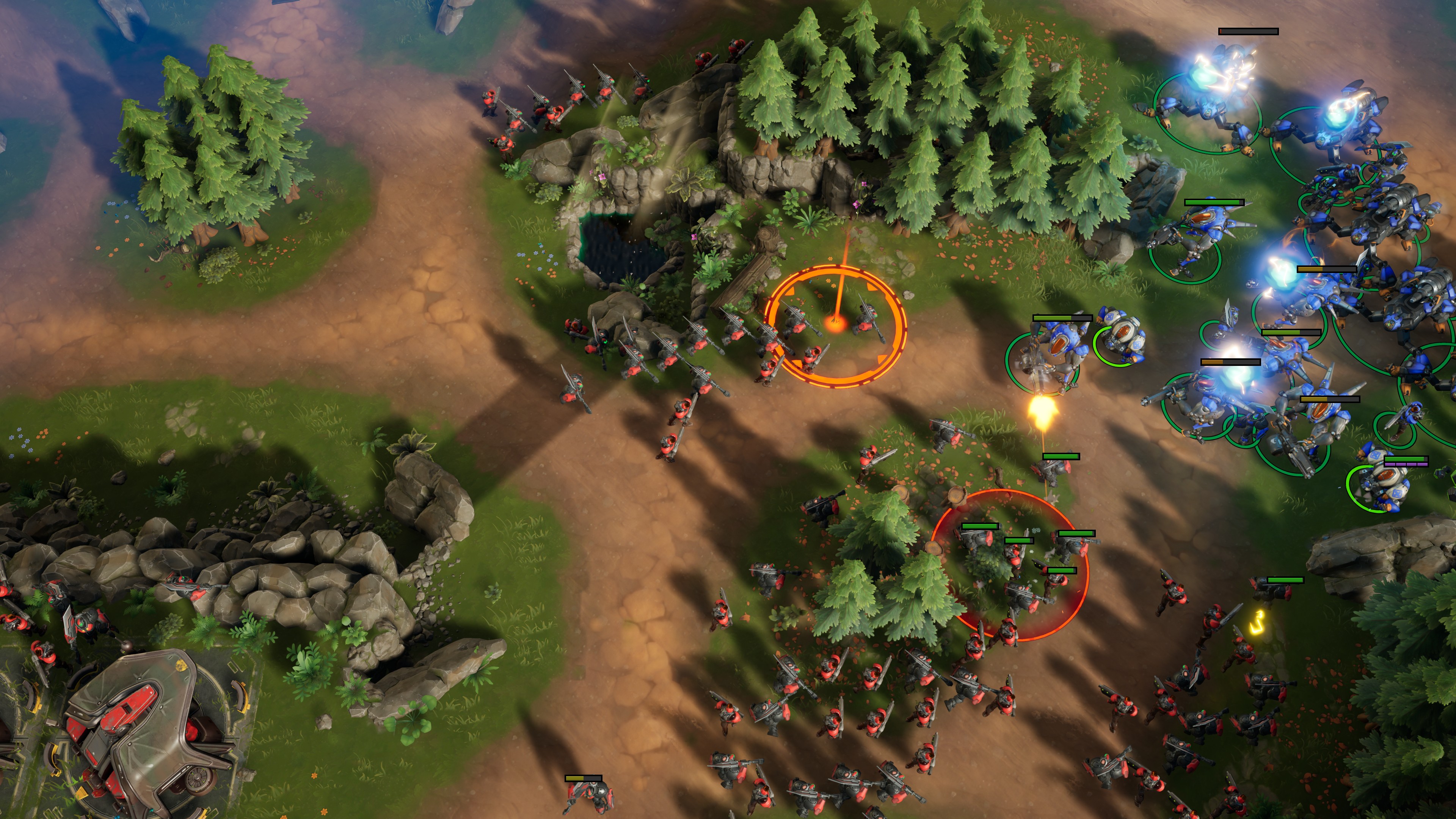
The building mode evokes Command & Conquer and its sidebar. It made one of my team wonder whether the third faction might include more C&C notes. Selecting multiple units or buildings all at once was easy, and MOBA-style opportunities to kill neutral mobs made my units stronger. (Vanguard units have levels, similar to C&C veterancy.)
Stormgate picks up where the RTS genre left off about a decade ago, directly iterating on the Blizzard and Westwood classics that first defined the genre.
The factions
We played the two available factions. The human Vanguard—StarCraft's Terrans, basically—faction is the most fully-formed at this point, featuring the only hero that was available to play (Blockade, a "sci-fi paladin") and easily trouncing the Infernal Host in our playtests as a result. Play-wise, it felt like a cross between SC2 Terrans and Orcs from WC3.
The Infernal Host is a Zerg-like faction with a fun twist—sometimes, you actually want your units to die. The two-headed Brute splits into two small fiends when it perishes, for example, and sacrificing some units can make others stronger.
Above: A video intro to Stormgate's newest hero, the Infernal Host leader Maloc.
f you get behind on recruitment, the Infernal Host offers the opportunity to insta-build new units—essentially, you pool up “charges” over time on your buildings that allow you to produce units. Strategically, that isn't smart, since you miss out on the chance to play those units as the game moves along, but it feels fun to nearly instantly make a small mob when you realize you had forgotten to queue up one of your buildings or a bunch of your forces are slaughtered.
I'm looking forward to seeing what Maloc—the first Infernal Host hero, coming in the next beta build—and his new units bring to the table for this faction, which already had some interesting mechanics.
Co-op is the core
While most folks will make their way through the individual campaign at least once, co-op play is where this game really shines. That's unsurprising, considering that co-op immediately became the most popular mode in SC2 nearly the moment it was released.
The underlying SnowPlay tech is designed to support matches with more than a thousand units in action at a time.
That co-op style will be available in PvP in 3v3 battles, but I expect a large portion of the player base will go PVE instead, playing together against the AI. My team's experiences with gameplay suggest that this will be a great mode for playing with friends of differing skill levels. Each of us found our own challenges, joining forces at times and focusing on our own individual battles and construction at others.
Overall, three-player co-op on the Wreck Havoc objective map was just as fun as I remember it from SC2, and the AI posed a reasonable challenge for our little group.
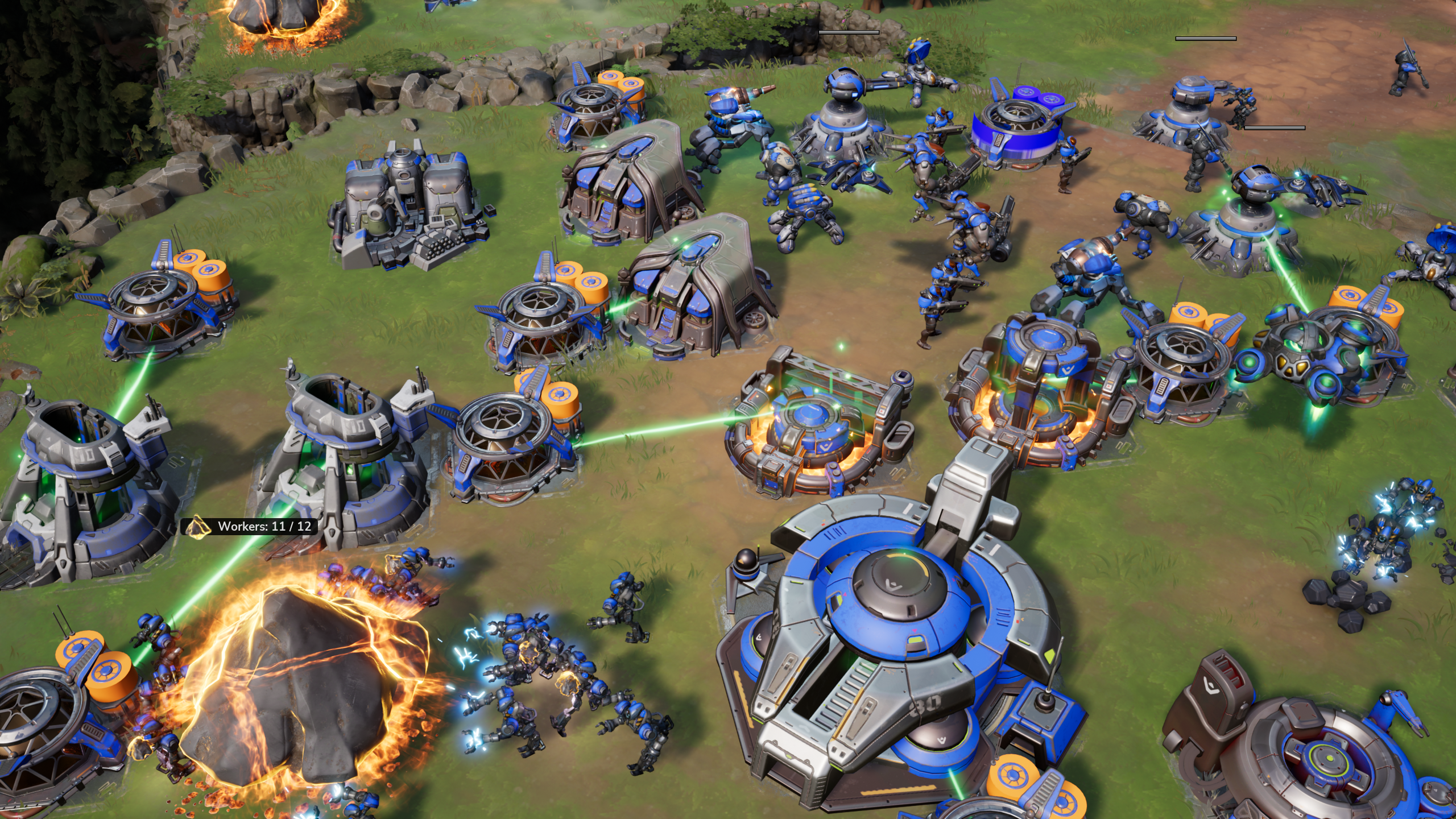
Stormgate is shaping up to be a great RTS stew made from the ingredients of previous genre successes—it includes a few twists of its own, but it's definitely being formulated for fans of classic RTSes who are hungry for new challenges.
It needs a lot of refinement and tuning, which isn't a surprise at this early stage in development. It's far too easy to build up a giant death blob, which then takes forever to complete battles—that health-to-damage ratio feels really high. Those big groups also tamp down the tactical Warcraft 3-like fun of those battles, because it's too hard to micro the actions of so many units.
The beta version I played felt like a great base on which to build, though. It coped well with large numbers of units on the map, and Frost Giant has said that the underlying SnowPlay tech is designed to support matches with more than a thousand units in action at a time.
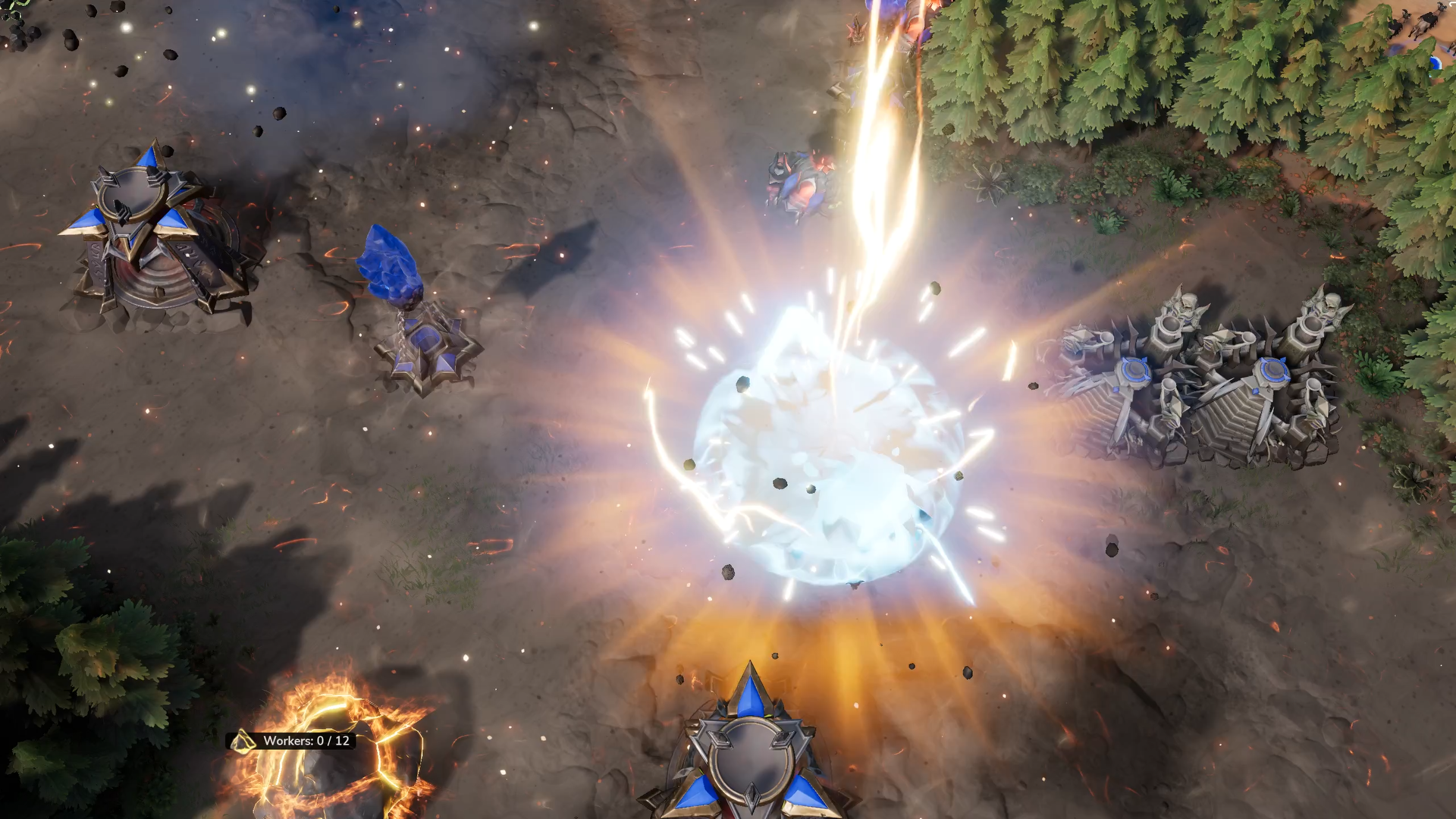
In terms of tech, Stormgate's 64Hz tick rate is substantially higher than previous RTSes. It also makes use of rollback technology, clock synchronization and adjustments frequently seen in first-person shooters, to reduce lag. We experienced zero lag in any of our gameplay sessions in this limited closed beta (two of us were in the Midwest, while a third was playing from Quebec, all using a game server that was likely in California).
If it achieves its potential, Stormgate could turn out to be an exciting combination of the depth of WC3 and the thrill of SC2, which would bode very well indeed for future esports action. Those competitions have already begun: A $10,000 EGCtv invitational will take place in February, during the upcoming beta wave. I'm excited to see what changes that wave has in store.
!["[T]he First and Fifth Amendments Require ICE to Provide Information About the Whereabouts of a Detained Person"](https://images.inkl.com/s3/publisher/cover/212/reason-cover.png?w=600)






